George Harvey was a famous artist of the 19th century who has made significant contributions in the realm of art. Although he is revered for his landscapes, he had originally begun his character as a miniaturist.
George Harvey (1800-1878) is not as widely recognized as some of his contemporaries, but his artistry and his contributions to the Victorian art scene are significant. Rooted in the rich traditions of Victorian painting, Harvey’s landscapes and atmospheric depictions provided a vivid portrayal of the era’s beauty and the changing face of nature.
Early Life and Education
Born in Scotland, George Harvey’s initial training began at the Trustees’ Academy in Edinburgh. His education there, under prominent Scottish artists, deeply influenced his style and perspectives, setting the groundwork for a career that would span several decades.
Artistic Achievements
Harvey’s work was characterized by a keen observation of atmospheric conditions and their effects on the landscape. He often captured the dramatic interplay of light and shadow, whether it was a sunlit glade or a stormy sky. His paintings are atmospheric, capturing the mood of the moment with an almost ethereal quality.
One of his most famous works, “The Bow in the Cloud,” showcased Harvey’s unique blend of realism and atmospheric interpretation. This painting, which depicted a covenant symbol, resonated with viewers due to its spiritual undertones and impeccable portrayal of the rainbow amidst a serene landscape.
His series dedicated to the various times of the day — Morning, Noon, Evening, and Night — further exemplified his dedication to capturing nature’s changing moods. Each painting in this series provided a snapshot of the time it represented, from the gentle hues of dawn to the mysterious shades of the night.
Recognition and Later Life
George Harvey was not just an artist; he was also an advocate for art. His contributions earned him recognition, and in 1829, he was made an associate of the Royal Scottish Academy. By 1826, he had already become its president, a testament to his standing in the art community.
Throughout his career, Harvey not only painted but also took on students, passing on his techniques and love for atmospheric landscapes to the next generation of artists.
George Harvey’s works, while not as widely recognized today, offer a unique perspective into the Victorian age’s landscapes. For anyone seeking to understand the tranquility, beauty, and ephemeral nature of that era, Harvey’s paintings are a window into that world.
Legacy
Harvey’s legacy is one of dedication to the craft and a deep love for nature. While he might not have the same household recognition as some of his contemporaries, his influence on Scottish and Victorian art is undeniable. His paintings remain a testament to his skill, serving as an inspiration for artists and a source of appreciation for art enthusiasts.
Not much of his past is known except for the fact he had a career drawing miniatures in England before his arrival in the United States.
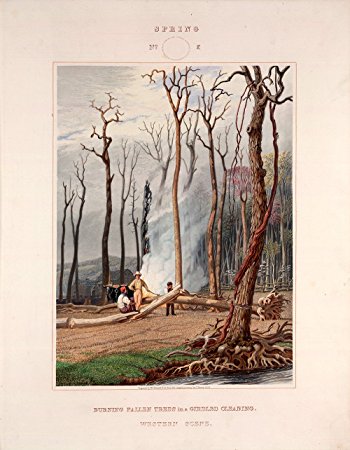
He did not offer many contributions in the first two years, during which he would wander in the remote parts of the country, hunting, and trapping.
He did not more than scrubbing mere prose and poetry and draw and sketch in Michigan, Ohio and various parts of Canada.
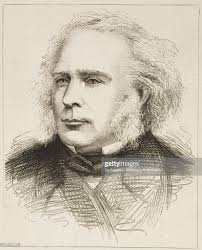
And had been elected as an associate to the National Academy of Design by 1828 and had moved to Boston.
George Harvey as an artist
He had made the first of six trips to London by 1830 to improve his skills. George was modest about his accomplishments and a prolific and successful artist. When he had come back to 1832, his health was deteriorating due to overwork.
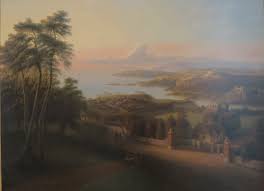
He had to give up miniature painting for some time. He had bought a tract of land and built a house at Hastings-on-Hudson at about 1834. From this time onwards, he put the focus on landscape painting. He became famous for his small-format atmospheric watercolours.
George Harvey’s Portraits and Landscape Exhibition
He had exhibited 213 works in 1844, that included 22 portraits as well as landscape miniatures at the Boston Athenaeum. Harvey had travelled a great deal and gathered a lot of experience that can be seen in his works.
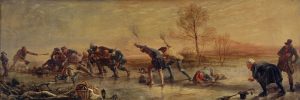
He had a studio in the New York City in the 1840s. He had lived in Boston during the 1850s. By the 1870s, he was back in Brooklyn and New York City and stayed there until he permanently returned to England by 1873.
Career of George Harvey
George Harvey was born in England and he had come to America in 1820 in order to seek fortune. He had been a skilled painter of portrait miniatures and the delicate watercolour landscapes. Due to his success, he had been elected to the National Academy of design. He was an entrepreneur in addition to an artist.
He had planned to create and market an elaborate album, containing engravings of significant American landscapes. He had been intrigued by the magnificent atmospheric effects of the climate in America, which had been significantly different from those in England.
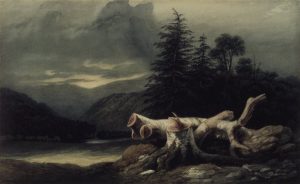
He had been recording the impressions in a series of watercolor paintings and sketches. Harvey had published his portfolio Atmospheric Landscapes in 1841 that had engravings from William J. Bennett as well.
George Harvey’s Arts
Four of the engravings were collectively titled the ‘Scenes of the Primitive Forest of America at the Four Periods of the Year’ and had been issued as aquatints in 1841 under the patronage of Queen Victoria. But the portfolio had been too expensive and only 250 copies were ever sold.
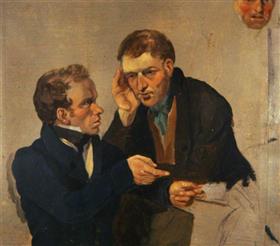
This had led to the discontinuation of the project. Harvey had even transcribed many of the impressions on glass lantern slides so that American extraordinary landscapes could be introduced to the English audiences for lectures.
He had continued his travels between England and America. George Harvey, however, made his home along the river Hudson, near his friend Washington Irving.
The Theme of his Paintings
Harvey’s paintings were amazing. One would easily get lost in the beauty following the gentle diagonal curve of the Erie Canal that would lead the viewer’s eye along the towpath.
The eyes would wander past the packet boat and settle in the distant villages of Pittsford, New York, outside the city of Rochester.
The painting is so serene that the buildings and the man-made waterway and towpath do not seem to disturb the landforms. The stillness of the water would reflect the details of the sky, the trees, and the packet boat.
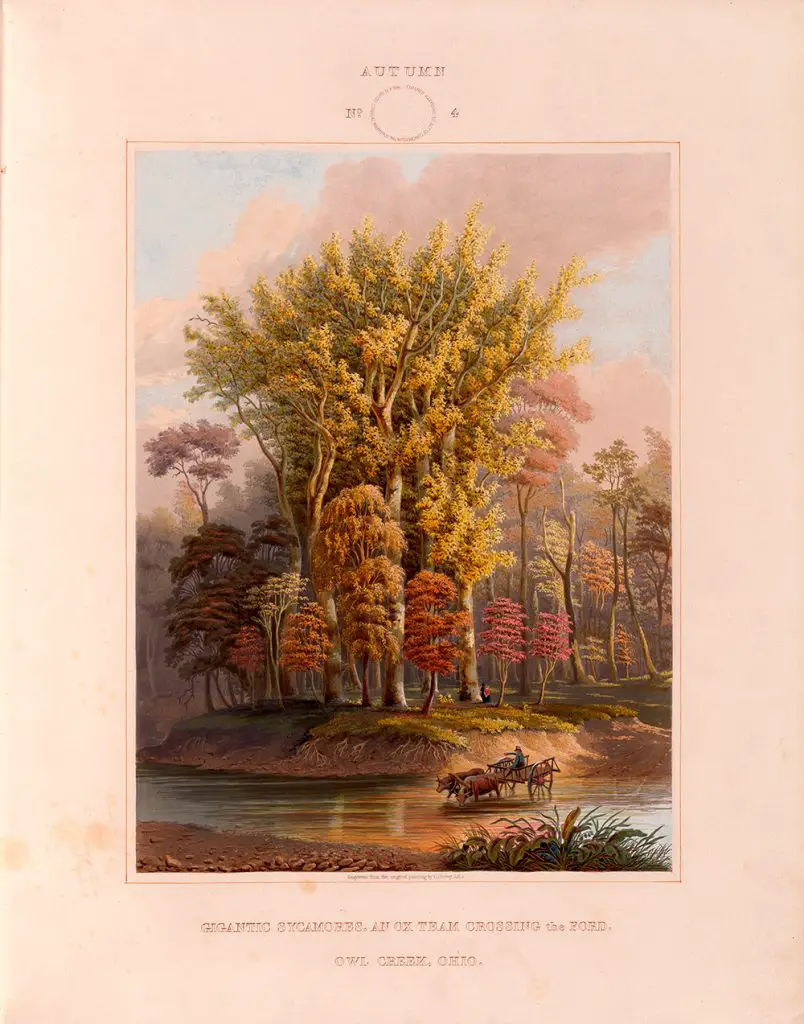
George Harvey’s keen interest in the varying effects of the atmospheric conditions on American landscapes during the different times of day can be surmised from the painting.
The clouds would fill the top of the painting and it would be reflected in the water below. Harvey had shared this feeling with many fellow artists at the Hudson River School. is works are revered throughout the globe even to this day.
Here are some of George Harvey’s notable works:
- “The Bow in the Cloud”: As previously mentioned, this painting stands out for its depiction of a rainbow amidst a serene landscape and has spiritual connotations, making it a standout piece.
- “Morning”, “Noon”, “Evening”, and “Night”: This series dedicated to different times of the day is one of his most known sets of work. Each painting offers a snapshot of its respective time, showcasing Harvey’s skill in capturing light and atmosphere.
- “A Schule Skailin'”: This work is an example of Harvey’s ability to capture human subjects and narrative moments.
- “Winter”: Harvey’s portrayal of the season is both stark and atmospheric, with a muted palette emphasizing the coldness of the season.
- “Covenanters’ Preaching”: A representation of an important historical and religious moment in Scottish history.
More Info On- Lilly Martin Spencer, Henry Moore, Jane Morris English Artists, Victorian Era Art, Artists